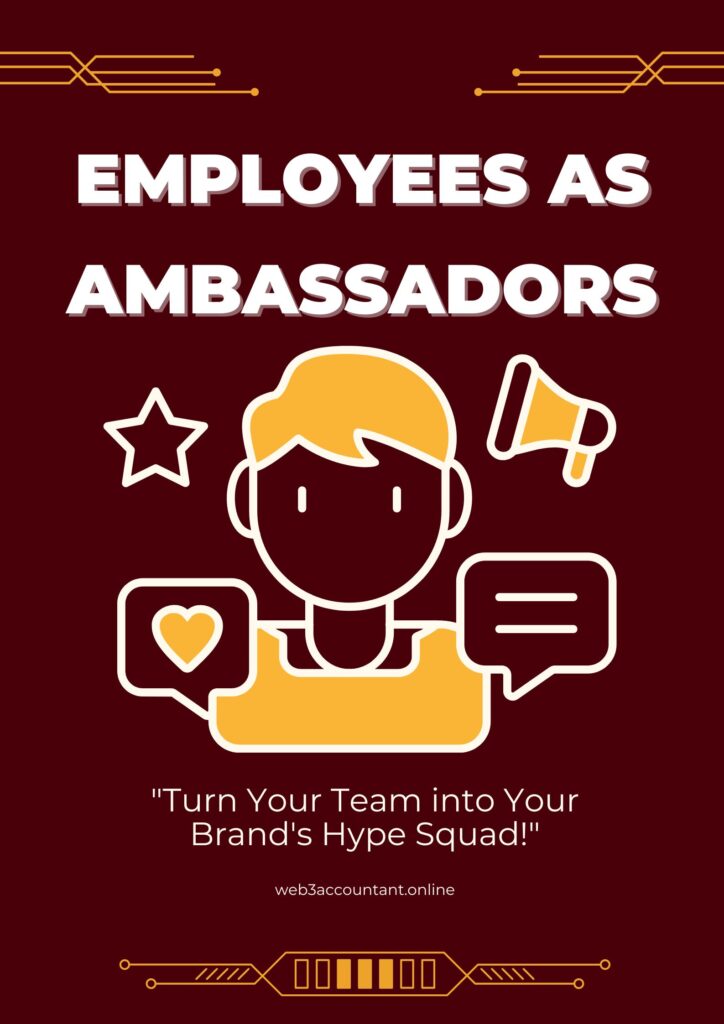
In the Web3 ecosystem, where decentralization, user empowerment, and transparency are key, building a strong brand presence requires innovative approaches beyond traditional marketing strategies. One of the most powerful ways to create credibility and trust in such an environment is by transforming employees into brand ambassadors. When employees genuinely believe in your project or product, they become influential advocates, amplifying your message across decentralized networks and communities. But how do you cultivate this brand ambassadorship culture effectively? By empowering employees to build their personal brands while aligning with the company’s mission, utilizing content creation, and offering appropriate incentives.
Personal Branding Techniques for Employees
Personal branding isn’t just an option—it’s essential. Decentralization inherently promotes individuality, and empowering employees to build their personal brands can significantly strengthen your company’s credibility. An employee with a strong personal brand who advocates for the project lends authenticity and trustworthiness to the overall brand
Empower and Support on Content Creation
One of the most impactful ways to humanize your brand and promote advocacy is by allowing employees to share their authentic voices through content creation. In the Web3 space, where transparency is paramount, content produced by real employees offers an authentic perspective that resonates with the community.
While it’s crucial to encourage employees to be creative and authentic, supporting them with the right tools ensures the quality of their content aligns with the company’s standards. Giving access to design, editing, and production tools is essential to help them produce polished, professional content.
- Access to design tools: Provide tools like Canva or Adobe Spark for creating visually appealing blog headers, social media posts, or infographics.
- Writing assistance: Offer editing support or workshops to help employees craft well-written articles, especially if they are new to content creation.
- Video production: With video content becoming increasingly popular, offer resources like video editing software (e.g., Adobe Premiere, Final Cut Pro). For those creating podcasts or interviews, support with audio equipment or editing assistance can ensure high-quality output.
Leverage Internal Talent for Collaboration
Collaboration is key when it comes to creating rich, multi-perspective content. Encouraging employees to team up across departments can produce higher-quality and more engaging material. This approach not only improves the content but also highlights the expertise within the company, positioning the brand as a well-rounded, knowledgeable entity.
- Cross-Departmental Projects: For example, a developer could partner with a marketing expert to write a detailed blog post about new blockchain updates and their market implications. This not only increases the accuracy of the content but also makes it more accessible to a broader audience.
- Co-Hosted AMAs (Ask Me Anything): Pair up team members from different roles for a collaborative AMA session, where technical insights meet community engagement. A product lead and a community manager might co-host an AMA, offering both strategic insights and answering community queries directly.
- Personal Narratives and Transparency: This thrives on authenticity and transparency, and allowing employees to share personal narratives strengthens their bond with the community. These stories make the brand more relatable and show the human side of decentralized innovation.
Token Incentives for Employee Advocacy
Web3’s token economy allows companies to incentivize employees in unique ways. Instead of relying solely on traditional rewards like bonuses or promotions, Web3 companies can create token-based incentive systems that align with the decentralized nature of the space.
- Reward Advocacy with Native Tokens: Employees who actively promote the brand, engage with the community, or create content can be rewarded with native tokens. These tokens can have real-world value or offer exclusive benefits within the company’s ecosystem, such as voting rights or access to premium features.
- Tying to a Reward System: Once milestones are defined, employees accumulate tokens based on their contributions. Each type of contribution can have a set token reward, and more significant or complex actions receive higher token amounts. For instance:
- Sharing a blog post might earn an employee 10 tokens.
- Hosting a webinar or AMA could be worth 50 tokens.
- Producing an in-depth report or research article could yield 100 tokens.
Creating a brand ambassadorship culture in Web3 is about empowering employees to become authentic advocates. By supporting personal branding, fostering collaborative content creation, and offering meaningful token-based incentives, companies can build a stronger, more credible brand presence. Employees who genuinely align with the company’s mission not only help amplify its message but also humanize the brand in decentralized spaces. With the right tools and a transparent reward system, employees become powerful voices that engage communities, driving both personal and organizational success in the dynamic Web3 ecosystem.

